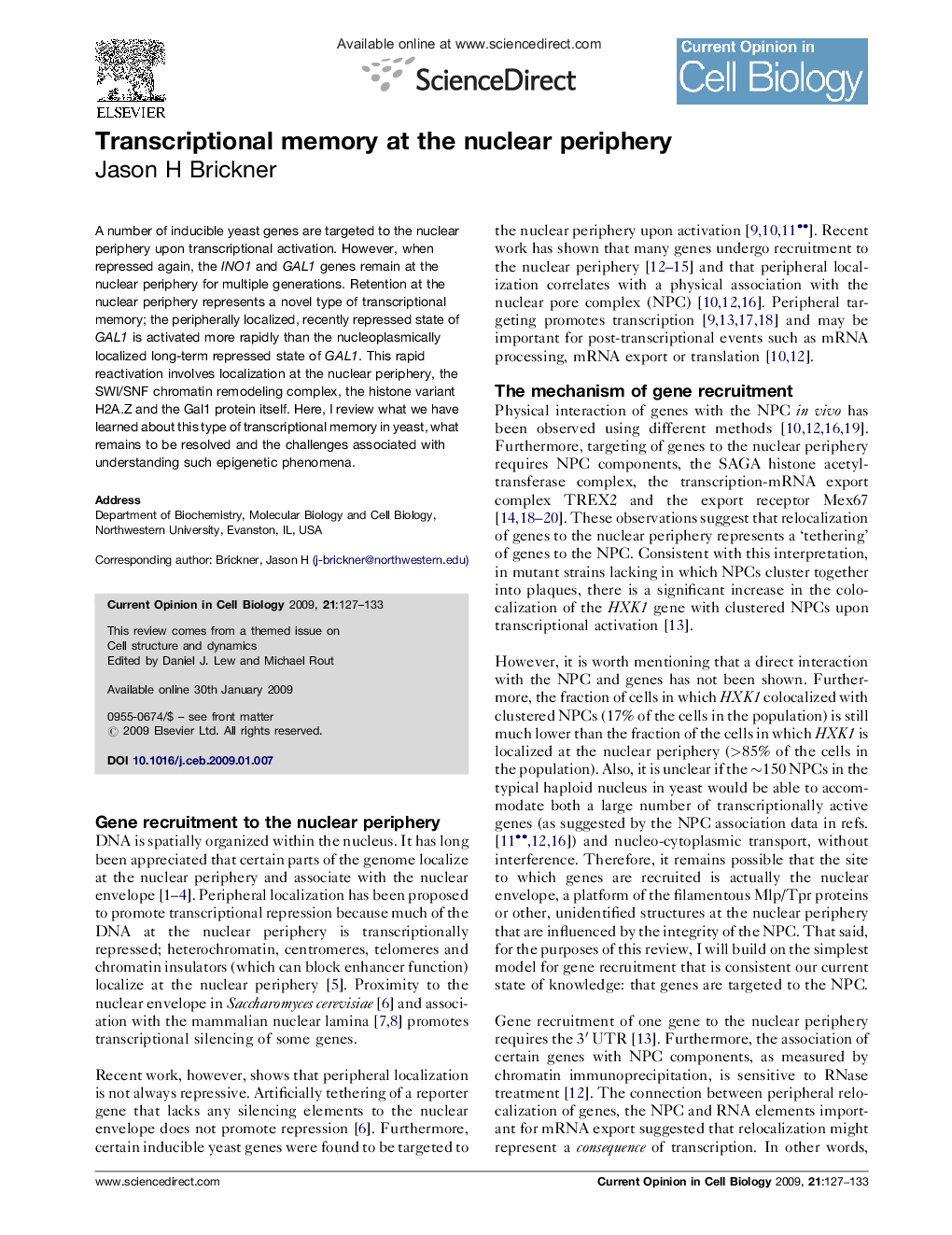| Article ID | Journal | Published Year | Pages | File Type |
|---|---|---|---|---|
| 2170083 | Current Opinion in Cell Biology | 2009 | 7 Pages |
A number of inducible yeast genes are targeted to the nuclear periphery upon transcriptional activation. However, when repressed again, the INO1 and GAL1 genes remain at the nuclear periphery for multiple generations. Retention at the nuclear periphery represents a novel type of transcriptional memory; the peripherally localized, recently repressed state of GAL1 is activated more rapidly than the nucleoplasmically localized long-term repressed state of GAL1. This rapid reactivation involves localization at the nuclear periphery, the SWI/SNF chromatin remodeling complex, the histone variant H2A.Z and the Gal1 protein itself. Here, I review what we have learned about this type of transcriptional memory in yeast, what remains to be resolved and the challenges associated with understanding such epigenetic phenomena.
